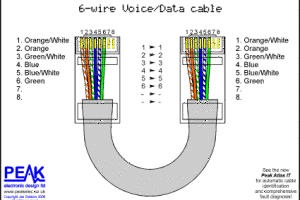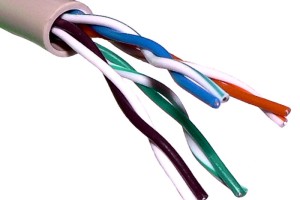Cabling Products: The Right Tools are Everything
The world of structured cabling materials and products is a vast and ever-changing. Because the industry of network cabling is so quick to revolutionize in technology and systems, newer products come onto the market all the time. While there are mainstays of equipment that can be trusted and used in many different situations, keeping up with the plethora of cabling elements is an important part of the structured cabling profession. Just the tip of the iceberg, these are two categories of cabling products used by network technicians.
SCP-L (Structured Cabling Products- Low Smoke Cables)
Low Smoke Zero Halogen (LSZH) refers to a material class used to describe cable coating or jacketing. Also known as ‘low smoke free of halogen’ or LSFH, this jacketing material is made of thermoplastic components that give of the least amount of smoke and halogen when in contact with strong heat or flame. While many network cables are coated with PVC, that plastic contains halogen which releases hydrogen chloride when exposed to heat, which is a poisonous gaseous material. Using low smoke cables keeps the level of toxic gases emitted from network cabling in the case of fire or flame. The same principles go into any other network hardware applied in high heat or fire-risk applications. These cables are used in particularly combustable situations, like under ventilated buildings or on planes or other vehicles. As networks are becoming more popular in unconventional situations, like commercial planes and public transit stations, these light, durable low smoke cables and hardware are being used more and more.
SCP-O (Structured Cabling Products- Optics)
Made of heated and stretched glass strands, optic cables are those which carry one or more optic fiber. These fibers are individually coated as to not bleed information into each other’s reflective information stream. These days, optic cables can hold up to about a thousand optic fibers and are responsible for many high definition deliveries of image and sound to televisions and computers worldwide. This optic sort of networking has it’s own specific system or connection and hardware to make the cabling. Fiber optics are in fact becoming incredibly popular, as they are in high demand for home entertainment and private business use. Especially in high information-traffic areas optic cables are very densely coated and made to be sturdy so that the signals do not have the opportunity to erode. Optic cables do, however have their own inherent flaws. Because the manufacturing process has yet to be perfected, imperfection exist in the fibers, which grow with time and use and degrade the optic capabilities. Professionals who deal with television network cabling know optic inside and out and use the tools constantly. Many network companies are even in the process of laying literal miles of optic cable so as to monopolize the information dead space to turn live when the market grow up in those areas.
Cabling materials are designed for such niche uses that understanding their tricks and intentions is very helpful in the structured cabling field. Some professionals will always be working in similar situation and will grow to understand one or another classification of structured cabling products more so than other, but a general understanding is truly best.




